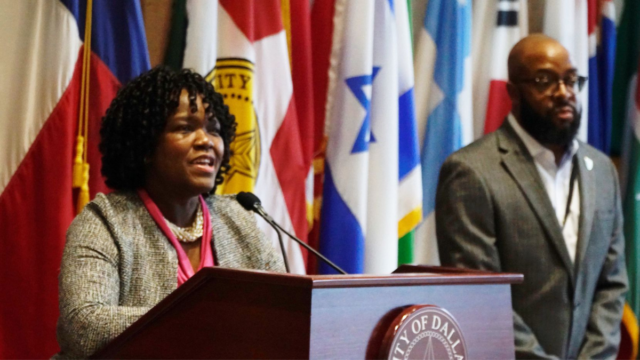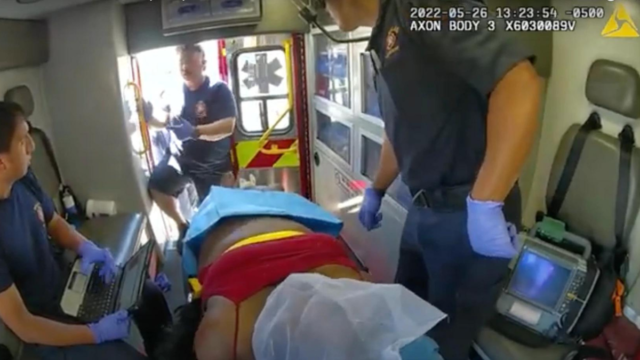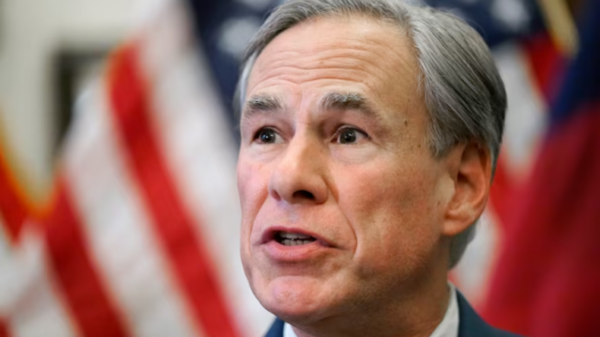By Kelli Smith

Police oversight officials plan to review Dallas police’s video-release policy after the city’s top police watchdog said Tuesday that she went “to battle” with the department over the release of footage showing the death of a Black transgender woman who became unresponsive in the care of police and fire officials last month.
Tonya McClary, head of the Office of Community Police Oversight, told the Community Police Oversight Board that police argued that the 38-minute video didn’t show officer wrongdoing so they wanted to wait to release footage “until some more investigation was done.”
“They didn’t want to release it,” McClary said. “It’s not the point of whether an officer did wrongdoing or not. The point of it is transparency and for the community in Dallas to be able to see these situations.”
The footage showed police and paramedics restraining LaDamonyon “DeeDee” Hall in Far East Dallas as she yelled and fought back before she died May 26. Her family has said she suffered from bipolar schizophrenia and appeared to be experiencing a mental-health episode. Hall’sautopsy reportispending.

Dallas police released the footage — and notified the public for the first time about the case — 13 days after Hall died. The department’s general order is for such a video to be released within 72 hours of the incident, but Chief Eddie García has the discretion to withhold the release of any video related to a critical police-involved incident.
The department has said the delay in this case was so the family could review the video. Police spokeswoman Kristin Lowman declined to comment further Wednesday.
The officers and paramedics involved in the case remain on active duty. Dallas Fire-Rescue suspended the credentials of two paramedics who were in the ambulance with Hall when she became unresponsive. A department spokesman said the suspensions happened “long before DPD posted the body-camera video.”
McClary was notified by police about Hall’s death the day it happened. She said Hall’s family was shown the footage June 2. It was unclear why police and fire officials did not announce Hall’s death before releasing the video.
“It doesn’t seem right to me,” said Brandon Friedman, who represents Council Member Paul Ridley’s central-Dallas district on the police oversight board. “I’m not satisfied with the reason for why this video was held for 13 days, especially given the fact that the family saw it on June 2.”
McClary said she co-wrote the 72-hour video-release policy and reminded police that the spirit of the rule is transparency. Police have said that García released the footage of Hall “in the interest of transparency.”
“It would probably be very rare for me to support us not releasing within 72 hours, but there is a gap in there that allows that at the discretion of the police chief,” McClary said.
The policy was implemented with other reforms in 2020 under former Chief U. Reneé Hall after the murder of George Floyd by a Minneapolis police officer. Previously, videos involving police shootings, use of force and deaths in custody were released on a case-by-case basis. In some instances, like the in-custody death of Tony Timpa, it has taken years for footage to become public.
Robbi Reed, Hall’s cousin, told the board she had questions about protocols in hopes of preventing an in-custody death from happening again. She wanted to know what advocacy is in place for loved ones of people who die in police custody, when officers call on other specialists while responding to mental-health crises and whether officers have cultural sensitivity training, adding that she saw “a lot of joking” and improper references to Hall in the footage.

Another issue raised during the meeting was confusion about why a paramedic placed a spit hood on Hall before she died. The mesh hoods, meant to keep someone from biting or spitting, are not used by many police departments across the country, but they’re widely used by corrections officers in prisons and jails, The New York Times reported in 2020.
Dallas Fire-Rescue spokesman Jason Evans said the department is still investigating the case so he’s unable to clarify why the spit hood was put on Hall. Oversight officials also plan to review police policies on the use of the hoods.
“Generally speaking, I can tell you that spit hoods are indicated for the prevention of the spitting at, and biting of, first responders,” Evans said in a written statement.
Two Dallas residents also vocalized their concerns during the meeting’s public-comment portion. One of them walked away in tears after asking whether officials took Hall’s vitals before she died and how police can regain trust with the community after delaying notification about the death.
McClary said Dallas police have been respectful of Hall’s dignity and preferred pronouns since her death. She said some detectives went to Hall’s homegoing service in a gesture of goodwill.
“DPD is trying to move forward to do some good things for the family, but I know it may not feel like it’s enough,” McClary said.









You must be logged in to post a comment Login